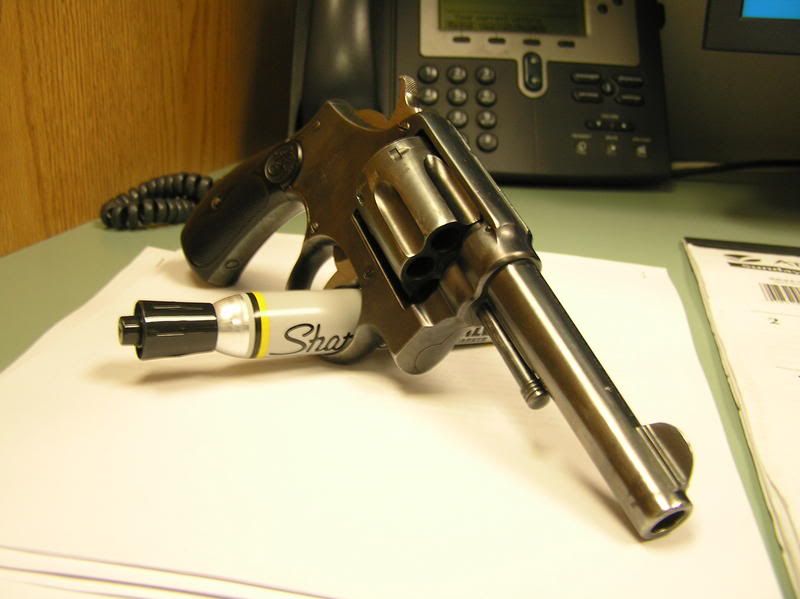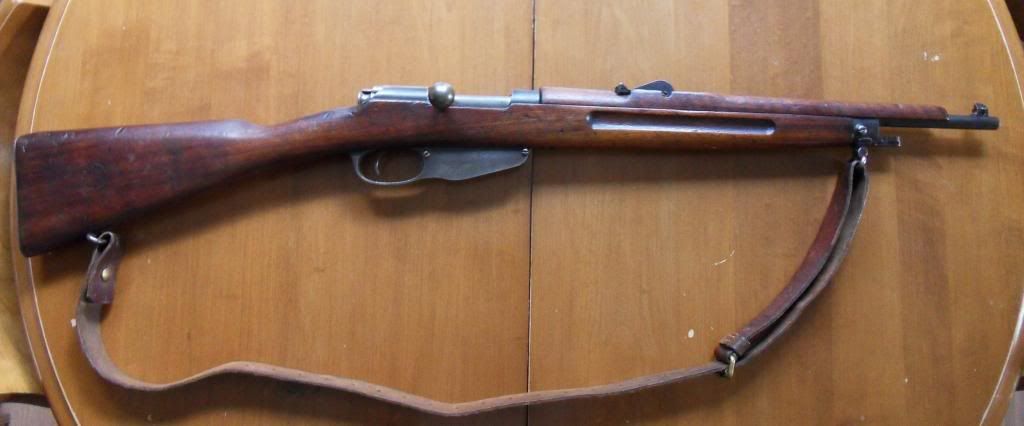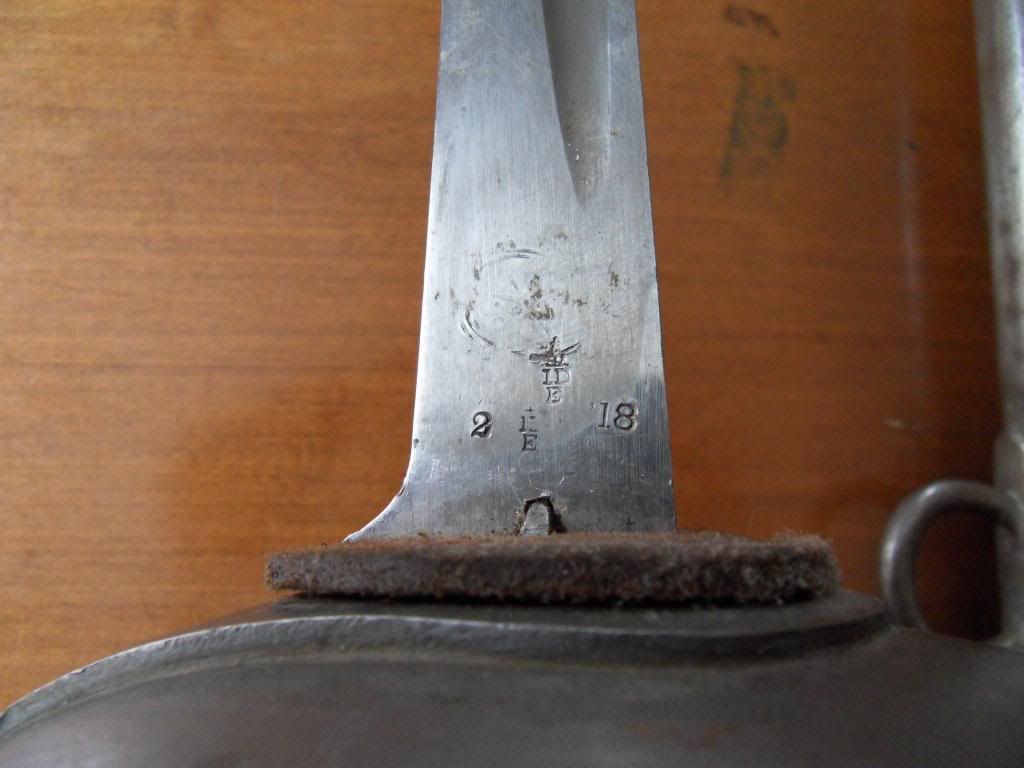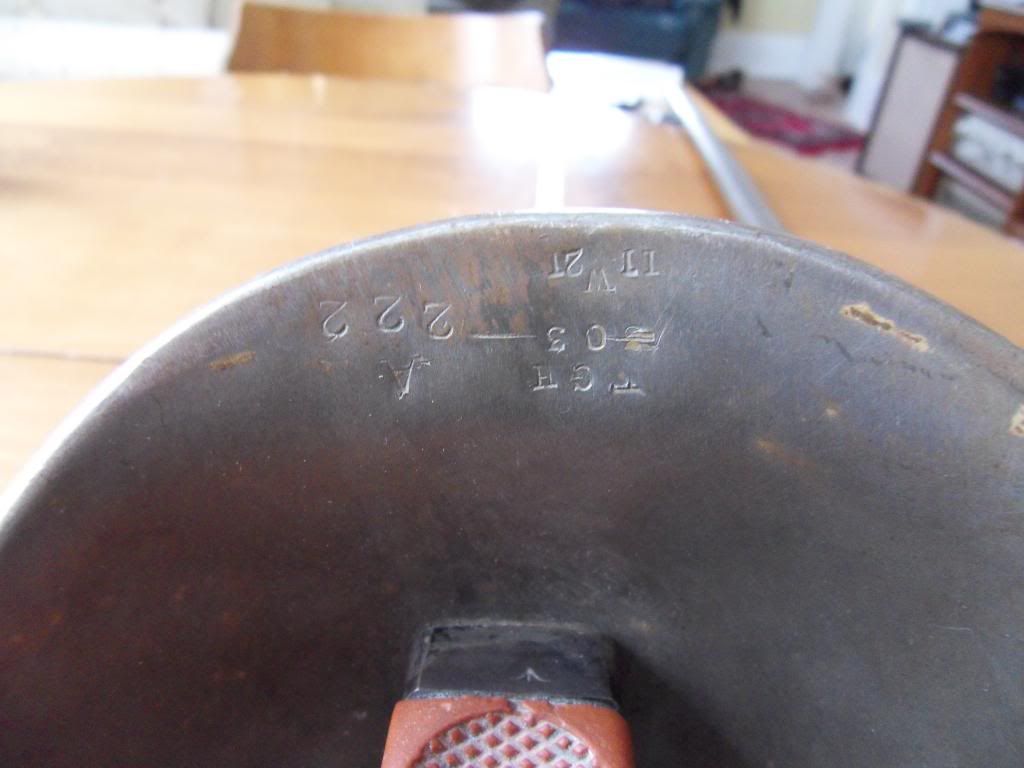
 |
|
#1
|
|||
|
|||
|
Haven't posted any new guns in awhile, so what the hell.
My most recent addition was a Smith & Wesson 1899 .38 Hand Ejector, which was S&Ws first truly modern swing-out cylinder revolver (the 1896 .32 HE had a number of features held-over from earlier guns) and the very first .38 Special to hit the market. It's pretty similar to the later 1905 .38 Military & Police that became the Model 10, except for the unsupported ejector rod, straight contour barrel and rounded rubber grips. It also has the tiniest sights I've ever seen on a service-type revolver! I still have pretty good eyesight and they're almost unusable except in perfect lighting conditions. This one has a 6 1/2" barrel and not alot of finish left, but it's in great mechanical condition.  I also picked up a 1942 Bulgarian contract Star Model B in 9mm Luger. The Bulgarians were allied with Germany in WW2 and participated in the occupation of Yugoslavia, but not in the invasion of Russia. That didn't stop the Russians from invading THEM in 1944, and this is a typical Russian captured gun with mismatched parts and a not espescially careful rebluing. The Bulgarians actually fought on the Allied side after 1944, so this piece would have seen service on both sides of WW2. 
|
|
#2
|
|||
|
|||
|
I also picked up a Winchester-Hotchkiss 1883 saddle ring carbine from work. This was the first bolt-action rifle made by Winchester, a 5 shot .45-70 with a tube mag in the butt loaded through the open action. They were initially developped for the US military, who tested the 1878 and 1879 models in rifle and carbine configuration, and then the 1883 in rifle only. This is one of very, very few 1884 carbines made for commercial sale. It's actually a surprisingly functional gun, feeds beautifully once you get used to loading the magazine, and pretty well to boot!
 Also picked up a 1918 Remington M1917 Enfield from a friend of mine for a very good price - this one was later sold to Canada during WW2 and used for training and defence at home. The red stripe around the forend was added at this time to warn you not to load .303 ammo into it, as it's pretty much identical to the .303 P14 rifle. This one is a tack driver - last time I went shooting I was banging the 300 yard gong with every shot. 
|
|
#3
|
||||
|
||||
|
I didn't know S&W had unsupported ejector rods. If I ever get around to that revolver guide I've been putting off, I'll have to remember that.
__________________
"Me fail English? That's unpossible!" |
|
#4
|
|||
|
|||
|
Only the 1899 .38, 1896 .32 and 1st model .22 Ladysmith (1902) did. The 1902 .38, 1903 .32 and 2nd model Ladysmith (1906) all went to supported rods, so they only did for 10 years across 3 models, none of which are commonly seen today.
|
|
#5
|
|||
|
|||
|
Some great pieces there Nyles. As always I'm very impressed with some of the items that you find.I also have a S&W Model of 1899 M&P with the 4" barrel. Mine was manufactured in 1902 and is chambered in .38 Spl. As you can see somewhere in the 109 years before I purchased it (2011) the original ejector rod end cap went missing and was replaced. I've toyed with the idea of replacing it, but so far I haven't.
 
Last edited by Jcordell; 10-30-2013 at 12:32 PM. |
|
#6
|
|||
|
|||
|
Thanks! That's a nice 1899 you have yourself, definitely in better shape than mine. I do prefer the 6 1/2" barrel though!
|
|
#7
|
|||
|
|||
|
Yes the 6.5" bl does somehow seem more period correct with the 1899. It just looks more Victorian Era. You can picture a British officer using it in South Africa during the Boer War for example.
|
|
#8
|
|||
|
|||
|
Or a wealthy officer in the American Volunteers purchasing one before he set sail to Cuba or the Philippines.
__________________
I like to think, that before that Navy SEAL double tapped bin Laden in the head, he kicked him, so that we could truly say we put a boot in his ass. |
|
#9
|
|||
|
|||
 I just picked up this Chinese Type Zhongzheng Mauser in 8mm Mauser, more commonly known as a Chiang Kai Shek rifle. Chiang Kai Shek changed his name to Zhongzheng around 1920 but it's not widely used in the West or Communist China. The Chiang Kai Shek is essentially a Chinese made copy of the German Standard Modell, which had been supplied to some divisions of the Kuomintang army, and was the predecessor of the 98K. This one was made at the Hanyang arsenal in June 1944 at the tail end of WW2 and would have seen use in the Chinese civil war afterwards. The characters on the butt indicate it was issued to local village militias after the Communist takeover, which partially accounts for it's rough condition. It's generally pretty beat up, and poorly made to the point that I wouldn't shoot it, but it gives me a new respect for the Chinese soldiers that carried weapons like this into battle.  I also picked up a 1943 Ishevsk Mosin-Nagant M38 carbine. The M38 was the first widely produced Mosin carbine, intended mainly to arm the crews of heavy weapons like mortars and machine guns. Unlike alot of refurb M38s, which were put it into M44 stocks with a cutout to accomodate the bayonet, this is in a proper wartime M38 stock, and as a bonus it's the rarer laminated wood stock. It's in pretty typical refurbished Mosin condition, but I was pretty happy to track it down as M38s have become pretty tough to come by in Canada.  Also got a Dutch M1895 Karabijn Marin carbine in 6.5 x 53mm Mannlicher, made at Hembrug in 1940 on a 1917 dated WW1-surplus receiver. The Dutch came out with a bewildering variety of carbines, and I originally purchased it thinking it was a No.5 Anti-Aircraft Troops carbine. A little research turned up that it's actually one of about 2500 carbines made for the Dutch Marines in the East Indies shortly before the German conquest of the Netherlands. Based on the condition, I think it's likely one of the ones which were diverted for the defense of the Netherlands before making it there.  Finally, I also picked up a bayonet for my French Berthier M1892 Artillery Carbine, an early model with the hooked quillon (blade breaker), but with WW1-era replacement wood grips instead of the original black rubber ones. Last edited by Nyles; 12-13-2013 at 07:20 PM. |
|
#10
|
|||
|
|||
|
Picked up a few interesting additions to the collection in January:
First was a rifle I've been looking for for years, I finally gave up on finding one in Canada and imported it from the US. It's a Mauser Infanterie-Gewehr 1871, the original single shot Mauser in an 11mm blackpowder cartridge that replaced the Prussian Dreyse need rifle after German unification. Call it the German equivlent to the Trapdoor Springfield or Martini-Henry. Interesting rifle, it has an extractor but no ejector, so you have to manually remove the empty from the action. Otherwise it's a thoroughly modern weapon for the era, though it doesn't have much in common with the familiar smokeless powder Mausers of the 20th century. These were never really used in combat by the German army, but were the most common rifle used by the Chinese in the Boxer rebellion, and about 1200 were smuggled into Ireland for use by the Irish Volunteers and Irish Citizen Army in 1913. They're known there as Howth Mausers after the site of the initial landing. They were used in the failed Easter Rising of 1916, which can be looked at as the Irish equivalent of Lexington & Concord. That's really why I'm so interested in this model, I've always has a passion for the history of the Irish struggle for independence.  My other purchase was a Canadian-marked Pattern 1908 Cavalry Sabre, made in February 1918 and issued to the Fort Garry Horse, a cavalry regiment (now "armored" reconnaisance) from my home town of Winnipeg that I've actually done alot of exercises with over the years. In 1918 the Garrys were serving in France as part of the Canadian Cavalry Brigade, and actually made mounted charges during the 100 Days Offensive that ended the war. Although it's well known that most British & empire cavalry units were dismounted and used as infantry in 1916, they were remounted in 1917 and saw alot of action after the breakout from the trenches in 1918. The Pattern 1908 sabre is actually a very interesting design, much along the same lines as the American M1913 Patton sabre. Rather than being designed for cutting attacks, it's meant entirely to be used as a thrusting weapon from horseback, with a long, straight, narrow blade that was often not even sharpened before battle and a large guard intended to protect the hand during the charge. The whole idea was that the power of a cavalry charge came from the weight and momentum of the animal, and that stabbing attacks were more often fatal than cutting. Interestingly this sword was designed to be carried on the horse, not the man, reflecting it's intended role.   
|
 |
| Thread Tools | |
| Display Modes | |
|
|